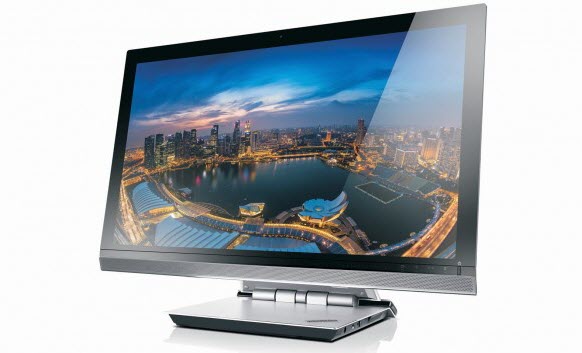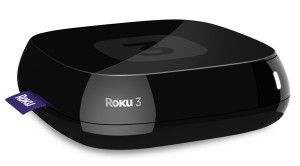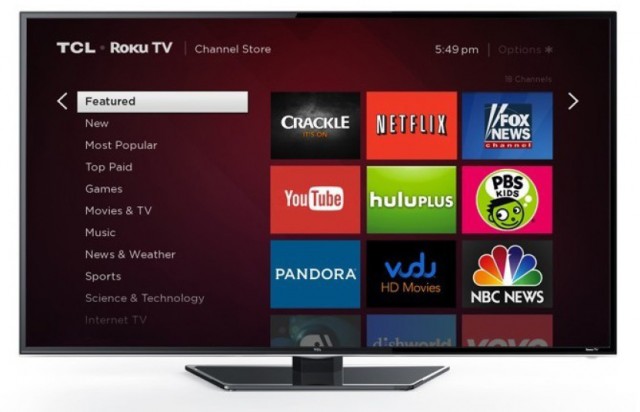If CES 2013 was the death of 3D TV, then CES 2014 is the death of Roku, Chromecast, Apple TV, and other digital media streamers/players. With the continued push towards smart TVs with built-in streaming apps, 4K displays that have an embedded Android media player, UHDTVs breaking below $1000, and news that Roku will release a line of TVs that come pre-loaded with the company’s streaming software, the standalone media streamer is fast approaching the end of its life.

For the last five years, media streamers have taken massive advantage of the rather odd fact that most households go a very long time between TV upgrades. Historically, the upgrade cycle was around eight years. In recent years, with the release of the HDTV spec and free-to-air digital broadcasts, a lot of households interrupted their usual upgrade cycle and jumped on the HDTV bandwagon. For the most part, though, if a household already has a circa-2007 42-inch 1080p TV (which they bought at great expense), they are in no rush to upgrade.

The humble media streamer changed everything
Back in 2007, streaming media didn’t really exist; YouTube was only just getting off the ground, and Netflix wouldn’t offer an unlimited streaming service until 2008. Digital streaming has only really taken off in the last few years, as services like Netflix, iTunes, Spotify, and BBC iPlayer have improved their libraries and quality of service to the point where they’re the easiest way to consume media. TV makers have responded with plenty of smart TVs that can stream digital media from the internet or a local source, but when faced with spending $500 on a new TV or $50 for a Roku, consumers have (very sensibly) opted for the standalone media streamer.
Now, though, as households finally look to replace their aging HDTV sets, it’s time for the digital media player to say farewell. The vast majority of new TVs announced at CES 2014 will have network connectivity and digital media streaming functionality built in. Roku, the king of cheap and cheerful media streamers, has announced that it’s working with six TV manufacturers to produce a line of Roku TVs with its streaming software built in. Lenovo is releasing a 28-inch 4K monitor (the ThinkVision 28) that also runs Android, allowing you to run all of the usual media streaming apps.

A Roku TV concept
UHDTVs
The main thing that TV makers are banking on, though, is UHD (Ultra High-Definition). By far the best way to get consumers to spend money on a new gadget is to include a revolutionary feature that they can’t get any other way — a fingerprint reader, a high-PPI display, LTE connectivity. The TV industry had hoped that 3D would get households to break their long upgrade cycle, but for a variety of reasons that never happened. UHD, which is often mislabeled as 4K, should be the tech that can finally kickstarts another round of upgrades. Expect to see a lot of smart UHDTVs announced at CES 2014, priced at around $1500. Uptake isn’t expected to huge in 2014, but as the price slips to around $700, we fully expect to see a surge of upgrades comparable to when HD Ready and Full HD TVs started to come down in price.
The sad joke, though, is that despite widespread proliferation of Full HD 1080p TVs you actually consume very little 1080p content. Very few TV stations (cable and satellite) broadcast in 1080p due to bandwidth restrictions, instead opting for 720p or 1080i. 1080p is available in some areas from Netflix, and on Blu-ray discs, but that’s about it. Likewise, despite the arrival of Ultra High Definition TV, you probably won’t be watching UHD content for years to come. Streaming services like Netflix and YouTube will dabble in UHD programming, but there’s currently no optical disc standard that supports 4K, and there is no TV broadcaster anywhere on Earth that has yet laid out a timeline for UHD content. This won’t stop TV makers from advertising UHDTVs like they’re the next must-have gadget, though.
From:http://www.extremetech.com/computing/173992-ces-2014-the-death-of-roku-and-can-uhdtv-succeed-where-3d-tv-failed










